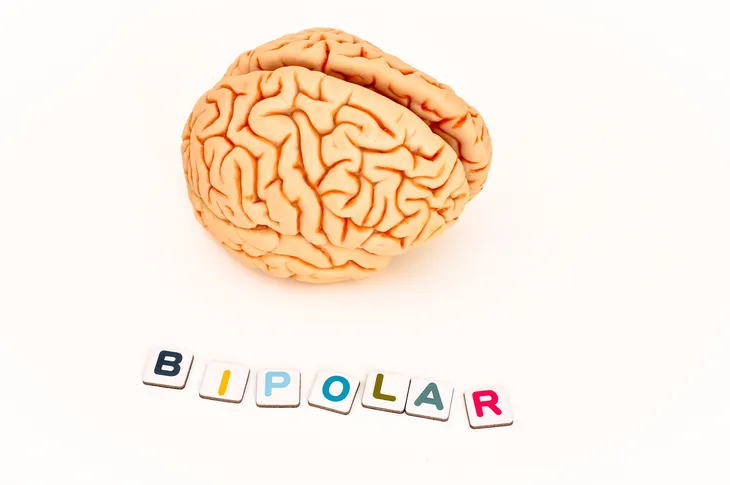Borderline personality and bipolar disorders are often used interchangeably, but they’re not the same thing in the medical community. While they can both cause impulsive behavior outside of the patient’s normal habits, there are some clear differences.
Getting the right diagnosis is also very important in this case to get the right treatments – which is not an easy task for a medical professional. MedicalDaily.com explains that bipolar disorder is often mistaken for depression, while borderline personality disorder (BPD) can be misdiagnosed as depression or PTSD. Let’s take a closer look at 13 differences between these mental illnesses…
Defining BPD
This condition is characterized by extreme mood swings, impulsiveness (such as reckless driving or spending sprees), and unstable relationships, notes MedicalDaily. The latter is likely because a patient’s opinion of a loved one can flip-flop in an instant.
In addition to “destructive mood swings,” the source also explains BPD patients typically suffer from low self-esteem, and frantic efforts to avoid real or perceived abandonment, which can lead to impulsive actions such as self-harming and suicidal behaviors.
What is Bipolar Disorder?
The same source points out there are many similarities to BPD, but one of the main characteristics that separate the two conditions is that bipolar patients tend to have a “break” in their symptoms that lands them in a “mid-range” mood that doesn’t include extreme anger or impulsiveness.
Examining interpersonal relationships can also be another clue to which condition is present. The source says that BPD symptoms are often triggered by “conflict within relationships,” while bipolar symptoms “usually appear out of nowhere.”
By the Symptoms: BPD
HelpGuide.org identifies nine symptoms of BPD to be aware of – to get a diagnosis, a medical professional needs to confirm five of them, it adds. The symptoms must be present for a significant length of time as part of the diagnostic criteria.
The symptoms include fear of abandonment, unstable relationships, unclear/unstable self-image, self-destructive behaviors, self-harm, extreme emotional swings, chronic feelings of emptiness, explosive anger, and feeling suspicious or out of touch with reality, says the source.
By the Symptoms: Bipolar Disorder
The same source explains that bipolar disorder “can look very different in different people.” It adds there are four types of mood “episodes” that are present with bipolar disorder – mania, hypomania, depression, and mixed episodes.
The associated “mania” can involve feeling “unusually high” or having unrealistic ideals about one’s own abilities, having lots of energy despite little sleep, fast-talking and quickly changing thoughts, and impulsiveness. Depression associated with the disorder can look like depression on its own – namely feeling hopeless, being irritable, not experiencing pleasure, feeling fatigued, having mental fog, trouble with appetite/weight changes, and disrupted sleep, it adds.
Constant Change?
Looking at how often the personality of a patient remains constant or is different can help identify the condition. While both disorders can cause very different moods, bipolar patients may have periods of time where they don’t appear to be displaying unusual behavior to outsiders, says Bustle.com.
Meanwhile, those with BPD don’t seem to have a “baseline” personality between episodes like bipolar patients, and it has a more consistent effect on the patient’s life, adds the source. Those who are bipolar can experience some relief from mood swings occasionally, while a BPD patient “feels the impact of their disease most of the time,” it notes.
Different Triggers
Identifying the underlying causes may help identify the particular illness. In the case of bipolar disorder, not being able to identify any triggers may be a clue to what it is – because researchers aren’t clear what causes it, notes Healthline. However, genetics and “profound trauma” may be culprits in some cases.
The source explains that a “broad combination of biological and environmental factors may cause BPD,” and those can include genetics, childhood trauma/abandonment, brain abnormalities, and irregular serotonin (brain neurotransmitter) levels.
Relationships the Focus of BPD
When determining BPD, a person’s interpersonal relationships should be more closely studied, as they are more of an identifier of the condition, says Bustle.com. “One of the key differences between these two disorders is the role that other people play in them,” it adds.
Bipolar symptoms can flare up without any outside human interaction (although stress and conflict can be a trigger), while BPD centers on how the patient interacts with others and how they see themselves, it adds. BPD symptoms usually are more reactive, a result of “a psychologically salient interpersonal event such as frustration, rejection or a sense of abandonment,” explains Bustle.
Who is at Risk of Becoming Bipolar?
While the cause of bipolar disorder is not clear, as we’ve mentioned earlier, the Mayo Clinic says there are risk factors that could lead a person to develop the condition or be a trigger for the initial episode.
Those risk factors include having a first-degree relative (parent or sibling) who is bipolar; sustaining periods of high stress from loss or trauma; and drug or alcohol abuse, says the source.
BPD Risk Factors
The Mayo Clinic also lays out risk factors for BPD, which are similar to those for bipolar but differ slightly. For example, you’re more likely to develop BPD if you have a close relative with a similar disorder, it explains.
However, other risk factors include a stressful childhood in particular – which can involve being abused or neglected, says the clinic. The patient’s caregivers may also have had substance abuse problems, it adds. A person’s natural personality can also contribute to the likelihood of having BPD – “impulsiveness and aggression may play a role in the development of borderline personality disorder,” it says.
Getting a Diagnosis
As we’ve mentioned earlier, there are 9-symptoms of BPD and identifying 5-of them will be enough for a medical professional to give a diagnosis.
While this is not a simple task, getting a diagnosis for bipolar disorder is just as complicated, if not more. The Mayo Clinic says a medical professional may use a physical exam, psychiatric assessment, and “mood charting” (keeping a record of your moods and sleep patterns) to determine whether a patient is bipolar. This disorder can appear in kids, and is often confused with ADHD, it adds.
Importance of Avoiding a Misdiagnosis
MedicalDaily.com explains there’s no “biological factor” to distinguish between the two disorders, but it’s important to understand what condition is present. “Misdiagnosed patients have a higher risk of worsened symptoms, complications from the disorder or mistreatment, or suicide,” it notes.
It adds that researchers continue to find ways to more easily diagnose each condition, explaining family history is being examined more closely, and that a study found that “sub-threshold manic episodes” (less dramatic than a full-blown manic or depressive episode) in children of bipolar patients is a good risk identifier.
There are Different Types of Bipolar Disorder
Making the diagnosis even tougher for bipolar disorders is that there are different classifications, notes WebMD. These include Bipolar I, Bipolar II, cyclothymic disorder, and mixed features, it explains.
Bipolar I involves severe mood changes from mania (up) to depression (down), while Bipolar II is a milder form of mania (hypomania) that alternate with severe episodes of depression, adds the source. Cyclothymic disorder involves brief hypomanic episodes alternating with brief depressive episodes, while mixed can have “simultaneous symptoms of opposite mood polarities,” it adds. Bipolar disorder may also be categorized as rapid cycling which involves having four or more episodes in a 12-month period, with each episode lasting for a minimum number of days.
Different Disorders, Different Treatments
In the case of BPD, a more behavioral approach is taken through psychotherapy, explains the Mayo Clinic. Medication can be helpful in some cases, and hospitalization may be needed if there’s an indication the patient may hurt themselves or others.
















